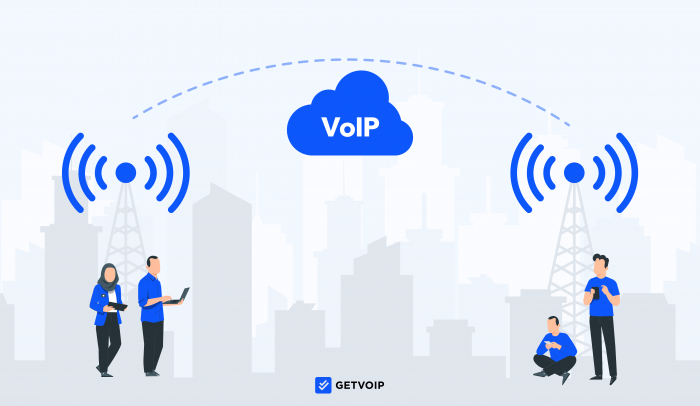Businesses today need the flexibility to switch to a new phone service provider without having to leave their established telephone numbers behind. Changing your business phone number can mean lost customers, inconsistent branding, and dealing with the inconvenience of having to update your number on multiple platforms and business materials.
Number portability (sometimes known as local number portability, or LNP) is the process makes it possible for business phone numbers to be transferred between service providers, allowing you to keep your existing residential or business number. This guide explains what you need to know about the number porting process, covering what it is, how it works, why it matters, and how to port your business number to a new provider.
- What is Number Porting?
- How Does it Work?
- Requirements
- Restrictions & Complications
- How Long Does it Take?
- FAQs
What is VoIP Number Porting?
VoIP number porting allows users to transfer their existing phone numbers between providers without having to change SIM cards or phones, eliminating the need for a new phone number.
Users can port VoIP, landline, or mobile number phone numbers. Number porting is an excellent option for customers that are unhappy with their current carrier, but also want to avoid the hassle and expense of changing their phone number.
The Federal Communications Commission (FCC) granted telecom service providers the ability to port numbers in 1988 and made number porting mandatory in 1993. This means that your existing carrier cannot refuse to release your phone number for porting, nor can the destination carrier arbitrarily refuse a request to port a phone number.
How Does Number Porting Work?
Number porting works by allowing users to essentially switch the back-ends of their old and new providers. When prompted during the new carrier signup process, users select the “port in” option on their current device to continue to use their existing number with their new account.
Be aware that number porting usually requires a multi-day waiting period while the new carrier obtains the user’s phone number from their old service. During this time, most providers offer the user a temporary number.
Requirements for Porting a VoIP Number
While the phone number porting process is fairly simple, there are some things to be aware of.
First, you will be required to provide your old and new carriers with the same information that you used when you originally signed up for service.
This includes the primary account holder’s name, address, Social Security number, account number, and password or other login information. If this information is not available, it can take longer for the port to complete.
Different carriers have different requirements for porting a VoIP number, but most follow a similar porting process.
Some common number porting requirements are:
- A valid reason for porting your number, such as changing providers
- An active account in good standing with your current provider. This can be done by logging into the app or website, or calling customer service. If you don't have an active account, it's unlikely that they'll agree to let you port out of their system.
- Proof that you are the owner and primary name on the account of the existing carrier
- Payment of an applicable porting fee or termination fee (typically $30-$50, depending on which carrier manages the actual number transfer)
- Number will be used in the same geographic area (i.e. the same country)
Note that certain providers will not be able to port VoIP or toll-free numbers or numbers from different geographic areas.
Number Porting Restrictions and Complications
Even though number porting is mandatory per the FCC and, in most cases, a simple process, there may be additional restrictions and complications.
- Restrictions on the Number of Ports: Some providers have restrictions on the number of ports per month or year, while others may only allow for a certain number of ports to be used in any single direction. For example, some providers allow for unlimited outbound ports as long as you are porting to/from other numbers within their own network, but will limit the number of incoming ports due to contractual agreements with other carriers.
- Contractual Restrictions: Some providers may also require that you have a certain amount of time left on your contract before they will allow number porting. Others may charge an extra fee for the service–or simply not provide it at all. Because of this, it’s important to check with your provider before requesting a number port, or better yet, before choosing a provider in the first place.
- Number Length Restrictions: Some providers have restrictions based on the length of the phone number being ported. For example, some providers will only accept 10-digit numbers (e.g., 123-456-7891), while others may accept 11 digits or 13 digits (e.g., 1-(123)-456-7891 or 1-(123)-456-78913).
- Number Porting Complications: Most number porting complications come down to a data mismatch. A data mismatch happens when the information provided on the request to the new carrier (usually in a Letter of Agency, also known as a Letter of Authorization or LOA) is different from what is on file with the current carrier in their Customer Service Record (CSR). All information on the LOA – particularly the authorized user, service address, area code, and zip code–must exactly match the information on the current provider’s CSR.
Other number porting complications may include:
- Unauthorized account - the person authorized to make changes on the account is not the same person who signed the LOA
- Wrong PIN number
- Incorrect or missing account number
- Inactive number
- Locked Google Voice number (all Google Voice numbers must be unlocked before porting out)
- Invalid billing telephone number
- Unportable number
- Resold account
How to Avoid Porting Complications
Most number porting process complications can be avoided by taking some simple steps before requesting the number port.
First, be sure the old phone number is still active and not in use by someone else. This can be verified by using a reverse phone lookup service like Whitepages or Spokeo. If there are no matches for your phone number, then it’s likely that you can request a number port without any issues from the existing carrier. However, if you find multiple matches for your old number when performing a reverse lookup, it’s best not to request number porting.
The next step is to gather any required documents and information on your existing account. If you don’t have this information, you can contact your current provider’s customer service department to get it.
Information needed to port a phone number could include:
- Your current account number
- The phone number you wish to port
- Your passcode or PIN (personal identification number)
- The address and contact information listed for your existing number
- The full name of the primary account holder
- A copy of your most recent phone bill
- Your online login information for phone services
How Long Does Number Porting Take?
The length of time to process a number port request depends on the type of service and the provider you are transferring from.
Traditional landline providers, like AT&T and Verizon, have their own porting systems offering much faster porting transfers than VoIP companies, which usually rely on third-party vendors for the porting process.
Most VoIP and mobile providers give an estimate of 5-10 business days for number porting. During this time, customers have two options. They can retain access to their existing phone number via an Interim Number Portability (INP) arrangement with call forwarding, or they can use a temporary VoIP phone number from their new provider.



